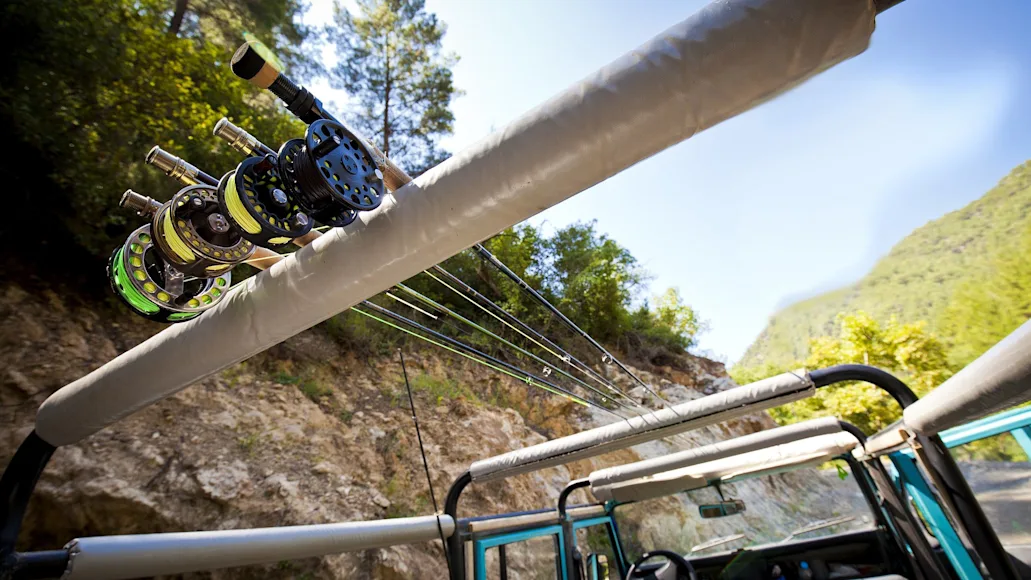There are a lot of numbers in fly fishing, and some of the numbering may not make sense to the uninitiated—or to the initiated, for that matter. A higher number means a smaller hook, yet the opposite is true when it comes to fly rod weights. It can be a little counter-intuitive. But we fly-fishers pursue a very wide range of species, from tiny sunfish to bluewater tuna, so specialized gear is necessary, and you have to categorize it all somehow.
Fly rods are organized by “weight”—not the actual weight of the rod, but the number assigned to rods and lines for particular kinds of fish. Using the right rod weight to use for the species is crucial for effective and enjoyable fishing. Here’s the breakdown, starting with a few words on the nature of fly lines, which are what fly rod weights are based on.
Table of Contents
Fly Line vs Other Kinds of Fishing Line
How to Choose the Right Rod Depending on Fish Size and Fly Size
The Best Fly Rod Weights Depending on Species
Fly Line vs Other Kinds of Fishing Line
A fly line is very different from the monofilament or braided line you would spool onto a spinning reel. Conventional fishing line does just one thing: allows you to retrieve your lure or baited hook after you’ve cast. They are sold by the hundreds of yards to replace line that’s gotten too old or was lost to tangles and snags. They play no real role in the actual casting.
A fly line is a single thing, usually 90 feet long. The front 30 feet or so is often thicker than the rest, which is known as “weight forward” and makes it easier to cast. The back end of the line is tied to the backing (strong, thin string) spooled onto your reel. At the front of the fly line is a leader, 10 feet or so of clear, tapered monofilament, and the front of that is where your fly is tied on.
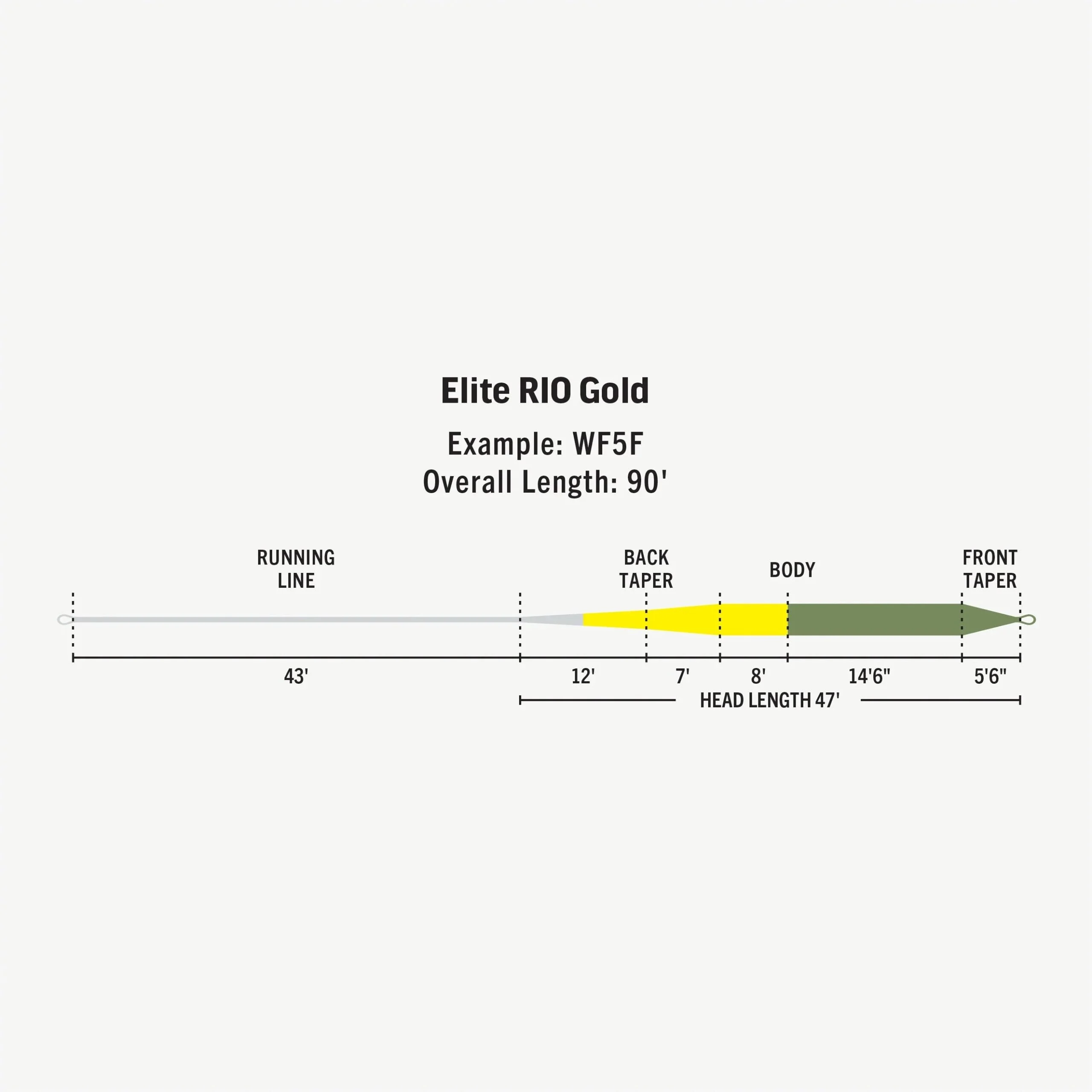
An exaggerated look at the shape of a weight-forward fly line. (Photo: Rio)
When you cast with a spinning or casting rig, you use the rod to throw your lure or baited hook where it needs to go. You really can’t throw a fly, any more than you could throw a feather, as the great Joan Salvato Wulff likes to say. In fly fishing, you throw the line, and the leader and fly go along for the ride.
A line’s weight signifies how well it can carry a particular size of fly and leader, and how easy the line is to cast. Smaller lines are meant for smaller flies and closer fishing, so a 2-weight line (and rod) is great for a dry fly on a mountain brook. If you need to make long casts with large flies for striped bass along the coast, you’ll want a rod and line in the 8-10 weight range.
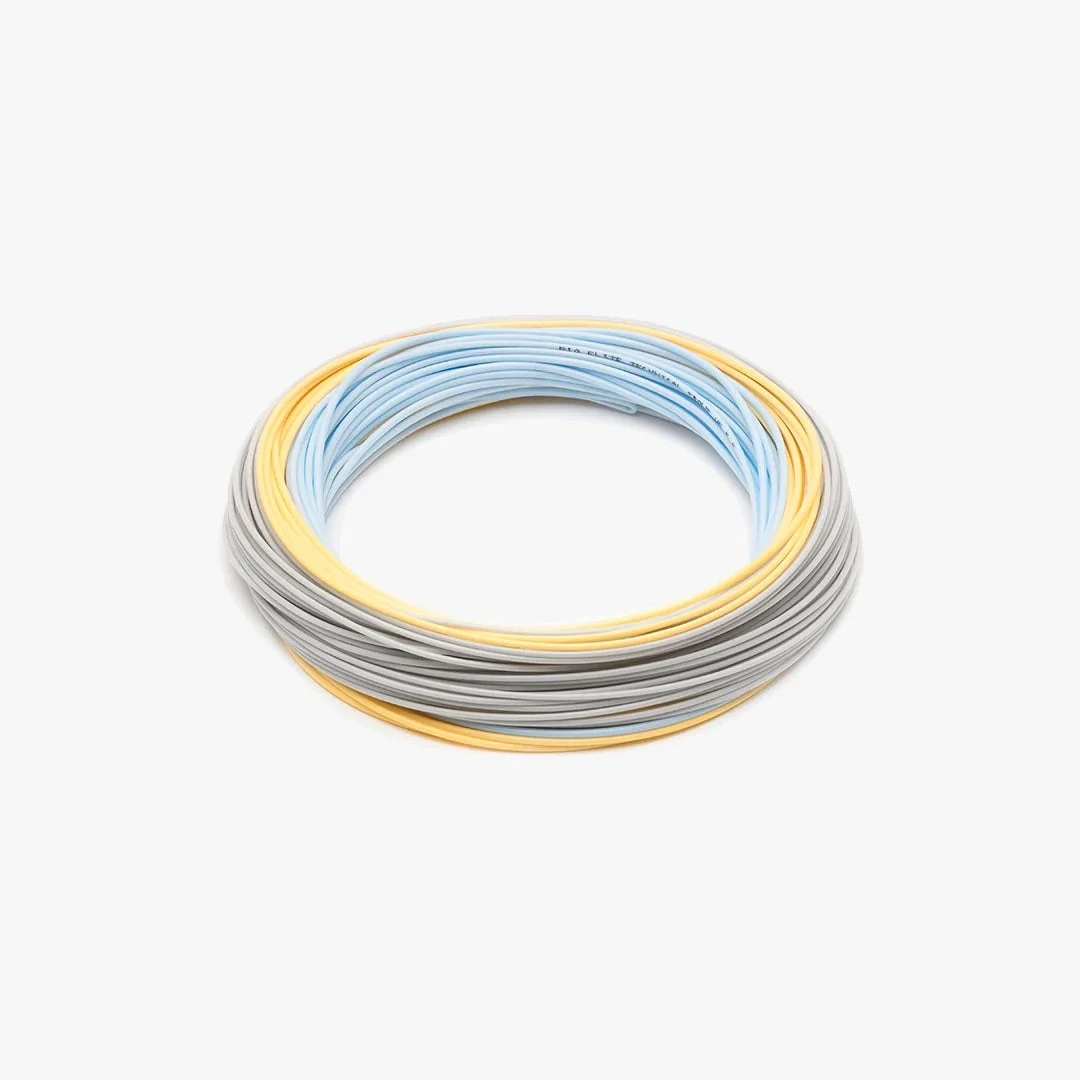
Fly line weighted and much thicker than other kinds of fishing line.
Line weight is a name, not a breaking strength. There’s no pound test for fly lines like there is for mono and braid. A 2-weight line will not break if you catch a fish over two pounds. Fly lines can break, of course, but the breaking strength of freshwater line cores is around 30 pounds, and heavy saltwater lines are closer to 100 pounds. Your leader will break first.
How to Choose the Right Rod Depending on Fish Size and Fly Size
Fly rods are strong and flexible, so catching something like a chunky bass on a rod designed for small-creek trout fishing usually isn’t a problem. But since bass are usually caught on heavier flies than trout, and because you sometimes need to cast a fair distance to reach them, a rod and line sized for bass will be more pleasant and productive to use.
You could also use the bass rod to catch an 8-inch trout sipping mayflies, but the line would feel clunky and the stiff rod would steal much of the excitement of the fight of the fish. Generally, rod weights from 1 to 5 are considered trout rods, 5 and 6 are bass rods, and 7 through 10 are for bigger fish like steelhead, salmon, and saltwater fish. Rods up to 15-weight are used for sharks, billfish, and similar exotic jumbos.
There’s overlap in these categories; a 3-weight might be fine on a pond where the bass run small, and there are lots of places with trout big enough to justify a 6-weight. Fly size matters too, both in terms of weight and wind resistance. Casting a big streamer a hundred times is a lot less work with a 6-weight than it is with a 4.
The Best Fly Rod Weights Depending on Species
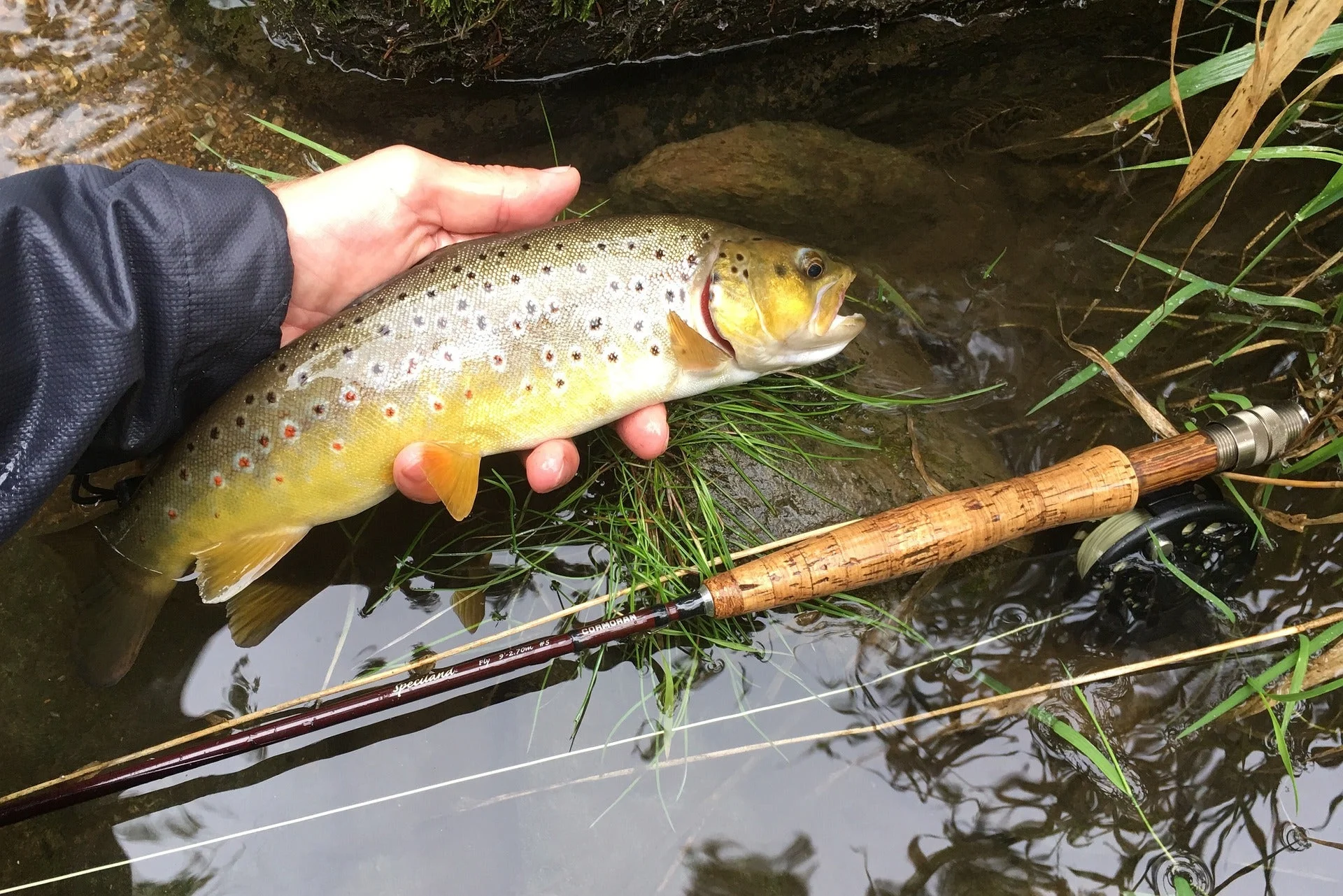
A 5wt fly rod is perfect for trout fishing just about anywhere. (Photo: Oleg Jeremin from Pixabay)
The Best Rod Weight for Trout: 5
A 9-foot, 5-weight rod is often called the classic all-around trout rod. A rod this size is heavy enough to handle trout into the 20-inch range, but still light enough that catching fish in the (much more common) 8- to 12-inch range is lots of fun. It is perfectly suited to high-sticking weighted nymphs to catch trout deep, casting all-but-weightless dry flies to rising fish, and swimming bulky streamers that often entice the largest trout in the pool.
Little 3- and 2-weight rods are sweet for small stream fishing for wild brookies or cutthroats, often in significantly shorter lengths to avoid bumping into overhanging branches and brush. A 6-weight rod is also reasonable for trout, especially if you know there are big ones present. But if I needed to choose just one rod for trout fishing, it would be the 9-foot 5-weight (like my Orvis Recon), and I wouldn’t hesitate to use it for trout and rivers of any size.
The Best Rod Weight for Bass: 6
Dr. James Alexander Henshall famously called bass the “gamest fish that swims” in his 1881 Book of the Black Bass. That’s a sweeping claim, but if you’ve ever played even a modest largemouth or smallmouth on a fly rod, you might agree. And compared to the fussiness of trout fishing—i.e., driving for hours only to find the water is too cold or too warm or too swift or too shallow or the hatch hasn’t started yet or the hatch is already over—bass can be found practically everywhere and are ready to bite. Game indeed.
Even small bass pull harder than trout, and big ones really are a handful. A 6-weight rod will typically have the backbone to keep a bass from rushing into snaggy cover, and to outlast it in a fight. Bass do bite things like dry flies and nymphs, but most of us fish for them with sizable poppers and streamers, and flies like that are easier to cast with a 6-weight than a 5. Many 6-weights, like the Sage Sonic, have fighting butts you can brace against your midsection for more help battling strong fish. The rod should be at least 9 feet long, for leverage and for casting.
Best Rod Weight for Steelhead and Salmon: 8
Migratory rainbow trout and all the Atlantic and Pacific varieties of salmon are amazingly strong, and even with the appropriate tackle, playing and landing them is an adventure. An 8-weight will not be too much for smaller steelhead and salmon, and might be just barely enough for bigger ones. Keep in mind that many anglers use very long, two-hand fly rods for fish like these, in line weights that would be closer to 12 if the rod were meant for single-hand use. Steelhead and salmon will put a sharp bend in a heavy rod. A great bonus to owning an 8-weight for salmon and steelhead is that you now also have a rod for northern pike, musky, carp, striped bass, bluefish, redfish, bonefish, snook, and other species that are too big for trout gear.
Best Rod Weight Overall: 6
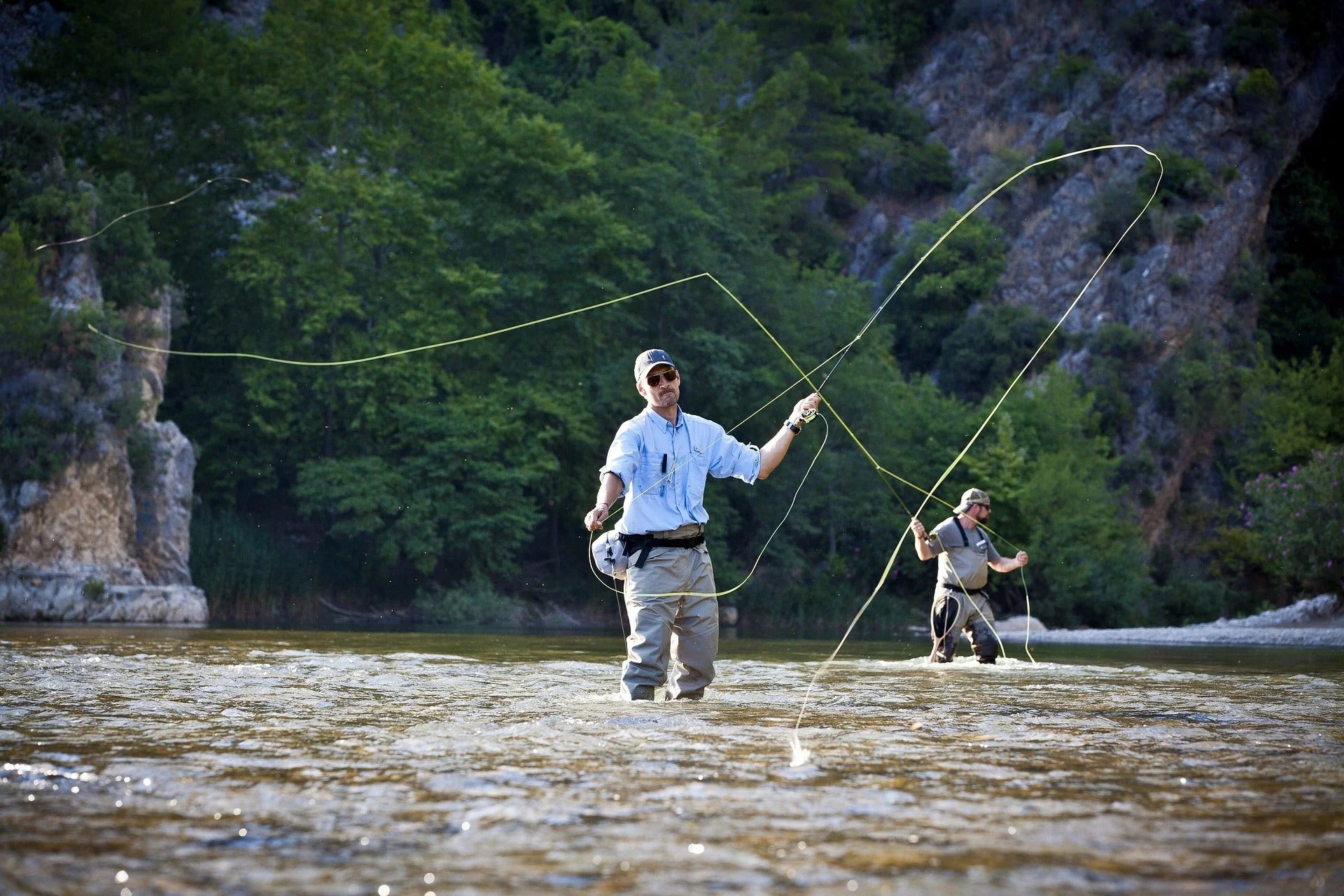
Sizing up to a 6wt rod will give you plenty of options in terms of what species you can fish for. (Photo: Frank Glittenberg from Pixabay)
If I could only own one fly rod, it would be a 6-weight. It wouldn’t bend as much when playing small wild browns in the 20-foot-wide streams in the Hudson Valley where I usually fish, but it would bend enough. And if the trout stopped biting, I could use the rod for bass upstream of the dam in the reservoir, or downstream in the Hudson itself. I could use it for beefy carp in park ponds or schoolie stripers in the bay. It wouldn’t be the right rod for the smallest fish or the biggest, but when limited to a single rod, versatility is key. I’d want one with a moderate action, rather than a stiff fast-action rod, so I could cast more comfortably on creeks. I’d like the fighting butt to be removable, just to feel less silly when trout fishing; then again, a fighting butt and an aggressively weight-forward line can facilitate Spey-style casting, adding a fun new dimension to the game.
As time goes on, many anglers like to add more specialized rods to their collections—maybe a tiny 1-weight for unnamed mountain creeks, or a 12-weight for that tarpon trip you’re finally going to take. But most of the fish that most of us catch can be played and landed on a handful of sizes, so it’s worthwhile to have the right fly rod weight. It makes the fishing that much more fun.

